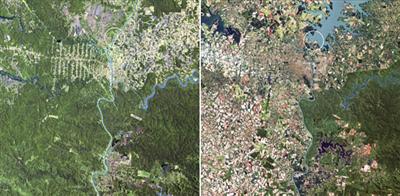 The Economist has a long article on the history and details of wind power over the years. Using the wind to generate electricity is beloved of greens because it produces little or no pollution. However, I have never had a good feeling about wind power as a solution.
The Economist has a long article on the history and details of wind power over the years. Using the wind to generate electricity is beloved of greens because it produces little or no pollution. However, I have never had a good feeling about wind power as a solution.
Here are some of the reasons that I feel wind isn’t the way to go.
1. Not the final solution
Wind energy on Earth is vast, but not unlimited. According to a study quoted in the article wind-energy potential is only 5 times global energy demand. So even if all wind energy was captured (wind turbines all over Earth) we wouldn’t have a solution to meet substantial energy demand growth.
2. I don’t like wind turbines
Wind turbines are massive, expensive, noisy, and damaging to birds (okay that is a little tenuous). In order to make significant inroads into our energy requirements enormous numbers of the beasts would be required. It doesn’t seem like an elegant solution. They are also too expensive to be economical.
3. Winds are irregular and in the wrong places
Not only do you need to find a location for the turbines, but they need to be where the winds are. That is often not where (and when) the winds are so you need to build huge transmission networks to the middle of nowhere.
Conclusion – wind power isn’t the way to go
I just don’t believe that wind power is going to solve our problems. I really like the idea of personal turbines (especially in windy Vredehoek) but wind power is not the solution to the energy crisis!
I believe that solar power is the ultimate solution, but until then nuclear energy is definitely the way to go. Proven technology, not too dangerous, green, economical. Nuclear is the way to go.

 The Economist has a
The Economist has a  It’s a good thing that being ‘green’ is becoming fashionable. We are hammering our environment so increased awareness is a good thing. That said, people don’t always think things through so sometimes their efforts don’t make the most sense. For instance in the past I have blogged that
It’s a good thing that being ‘green’ is becoming fashionable. We are hammering our environment so increased awareness is a good thing. That said, people don’t always think things through so sometimes their efforts don’t make the most sense. For instance in the past I have blogged that 



